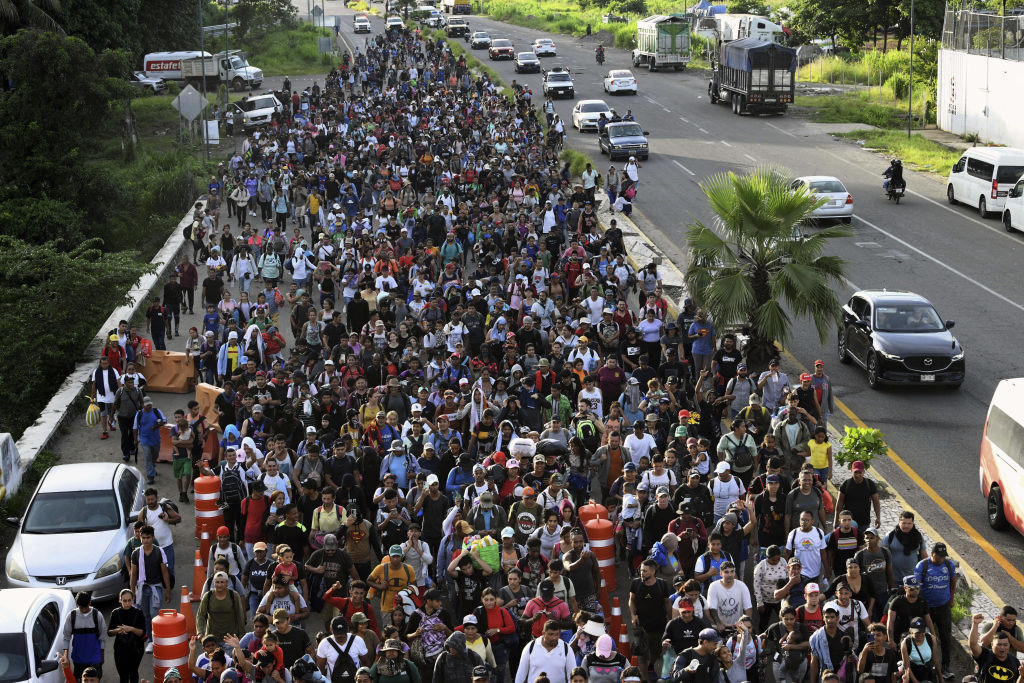by Lawrencce Kadish
It's time to do the math regarding the profound and stunning increase in the number of new citizens who will be eligible to vote in this year's exercise in democracy.
 |
| We need to appreciate that the potential for voter fraud, the accelerated nature of accepting new citizens and a chilling border crisis are all emerging forces during a presidential election year. They have the means to alter the course of democracy, our global standing, and our shared future as Americans. Pictured: Thousands of migrants pass through Chiapas, Mexico, escorted by the Mexican National Guard, walking towards the American border with the goal of illegally crossing into the US, on July 23, 2024. (Photo by Isaac Guzman/AFP via Getty Images) |
In this presidential election year, it is time to do the math.
Not the traditional math of counting electors, calculating swing states voters, or debating polling data. No. It's time to do the math regarding the profound and stunning increase in the number of new citizens who will be eligible to vote in this year's exercise in democracy.
According to the United States Citizenship and Immigration Services (USCIS) the fiscal year 2022 saw one million new citizens sworn in, citing it as the highest number of naturalizations in nearly 15 years. The government agency says this number reflects the Biden Administration's effort to address the backlog of applications that had grown during the COVID pandemic.
The FY 2023 statistics saw 878,500 new citizens participate in naturalization ceremonies that make them eligible to vote. By doing the math, we find that naturalizations in fiscal years 2022 and 2023 made up nearly a quarter of all naturalizations over the past decade.
It is as if Washington seeks to consciously create a demographic sea change as to who will now be able to go to the polls in 2024.
There is a Pew study breakdown of where these new voters are coming from.
Their report reveals that Mexico is the top country of birth for U.S. immigrants. It states that in 2022, over 10 million immigrants living in the U.S. were born there, or 23% of all immigrants. India, with the second-largest share, was far behind at 6%, followed by China came at five percent, the Philippines at four percent, and the Latin American nation of El Salvador stood at three percent.
What these various numbers mean is that the nation's electoral base has changed over the last four years, either through a deliberate political calculation or by happenstance. For those of us who don't believe in coincidences, it potentially represents a subtle, even unscrupulous, strategy to change the outcome on Election Day.
Then of course there is the not insignificant matter of the border crisis. How many of the illegal aliens who have crossed into the United States during recent years might be sworn in as citizens, further contributing to the election night vote tally? When viewing a report from Capitol Hill, the math is staggering: millions.
We need to appreciate that the potential for voter fraud, the accelerated nature of accepting new citizens and a chilling border crisis are all emerging forces during a presidential election year. They have the means to alter the course of democracy, our global standing, and our shared future as Americans. Our understanding starts by doing the math.
Lawrencce Kadish serves on the Board of Governors of Gatestone Institute.
Source: https://www.gatestoneinstitute.org/20867/borderline-election
No comments:
Post a Comment